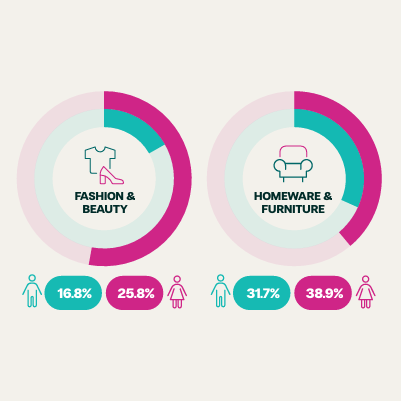Will 2023 be the year for Mergers & Acquisitions (M&As) in retail finance?

After a busy 2021, analysts predicted a wave of fintech consolidation. But merger and acquisition (M&A) activity slowed in 2022 as competition grew fierce. Why did this happen? And will the situation be any different in 2023?
Or will the ongoing recession, high interest rates and a lack of confidence silence M&A activity completely this year?
Mergers & Acquisitions, and Retail Finance
Cast your mind back to January last year, and the distinct whiff of optimism in the air.
Digital payment companies were doing well after the pandemic had accelerated the shift to online spending. Interest rates were rock bottom, so cash was easy to come by. Investment was rife. A record number of tech companies had gone public in 2021, and Merger & Acquisition (M&A) activity reached record highs.
In retail finance, Affirm listed on the New York stock exchange. Jack Dorsey’s Block announced plans to acquire Afterpay. Klarna became the most valuable privately held company in Europe. Buy Now, Pay Later (BNPL) firms cemented their positions among the major tech players, and analysts forecasted a “wave of consolidation” over the next year.
Then came the rest of 2022, and that sense of optimism started to waft away.
Inflation hit record highs and central banks raised interest rates at historic speed to reduce the impact on global economies. Unfortunately, a recession was unavoidable for many Western countries. Things were even worse in the UK, where the Sterling crashed as a result of political instability.
In the retail finance sector, two different stories played out. On the one hand, valuations plummeted, IPOs were delayed, and deals fell through. On the other hand, the competition heated up as some of the world’s biggest companies threw their hats in the ring.
Apple notably announced its first foray into credit with Apple Pay Later – a Buy Now, Pay Later (BNPL) product for Apple Pay users. Banks, too, began to reclaim market share and battle the fintechs. Natwest, HSBC and Barclays are now building their own retail finance capabilities.
But with cash rich banks and tech companies now in on the action, things could be very different in 2023.
What circumstances do we need for M&As to flourish?
Merger and Acquisition (M&A) activity largely depends on the following factors:
Low interest rates
If interest rates are low, the cost of borrowing is also low. For businesses, this means accessing credit to fund expansion is more affordable in times of low interest rates. Mergers and acquisitions are therefore less likely when interest rates are high, such as they are now.
Stable economic conditions
Deals are made when executive confidence is high. An uncertain economy makes it difficult for decision makers to make their move, reducing M&A activity, and vice versa.
Strong industry dynamics
Competitive industries (like retail finance) are more likely to see mergers and acquisitions than non-competitive industries. Firms in these types of sectors aim to boost their position in the market, or expand into new ones, to strengthen their business.
Solid company fundamentals
Individual companies will aim to improve their market position by acquiring customers, contracts, technology, or simply greater market share. It depends on the ambitions of the firm. Banks, for example, are cash rich and keen to defend their position against the fintechs. Struggling fintechs, meanwhile, are more likely to want to sell.
Through this lens, we can begin to forecast what may happen in 2023.
What’s on the horizon for 2023?
Market conditions have contributed to an overall reduction in M&As throughout 2022. It’s fair to assume this trend will continue so long as interest rates remain high – which they will, until at least the end of Spring.
Dealmakers reliant on private equity will find it tough to justify the increased cost of borrowing, particularly while their own purchasing power is reduced.
Valuations will remain low throughout this period as the poor economy affects executive confidence. Lower valuations means poorer purchasing power, which will make it difficult for any offers to be made.
What’s more, the stakes will be raised further as governments clamp down on unregulated credit products like Buy Now, Pay Later (BNPL). Long-awaited legislation is expected to arrive in mid-2023. Compliance will be costly, particularly for firms who are not prepared for change.
In summary, it looks unlikely that many retail finance companies will be looking to acquire in 2023. On the contrary, fintechs may come under pressure to sell.
Banks, meanwhile, are flush with cash. Customer deposits will remain high as interest rates push banks’ savings rates up. Higher interest rates therefore means more money for banks. Without needing to borrow equity from private markets, 2023 may represent an opportunity for banks to purchase retail finance companies at a discount.
Better together?
M&As make a lot of sense for banks hoping to enter the retail finance market.
Retail finance fintechs have their own portfolio of merchants, while their merchant clients bring their own pools of customers. Banks acquiring these fintechs therefore gain access to new groups of merchants and customers.
But in doing so, banks shoulder the risk of developing and maintaining a new business service line. Attracting and retaining talent to maintain these acquisitions could prove costly.
Culturally, too, these firms may not be a good fit. Fintechs are agile and nimble, while banks move slowly through a barrage of red-tape. Acquiring a fintech company may require the bank to adjust their internal culture to help facilitate that firm’s ongoing success.
The benefits of partnerships
Another angle of attack is for banks to choose a good partner while they weather the economic storm.
Through solid partnerships, banks can enjoy all the benefits of acquiring their own retail finance solution while minimising the risk and extra workload that a takeover would require.
Companies like Divido are building an ecosystem, connecting some of the world’s biggest lenders to a network of retailers and merchants with pre-existing customer bases. Banks can also use the Divido platform to create their own white label retail finance capabilities, which they can offer their own merchants under their own brand name.
The Divido platform helps banks to save time, energy and capital when implementing retail finance.
Want to learn more about the benefits of white label retail finance? Contact our sales team and sign up to our newsletter using the buttons below.
Keen to know more?








